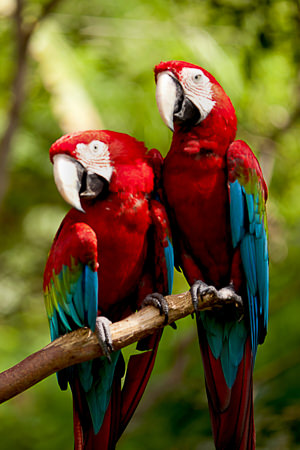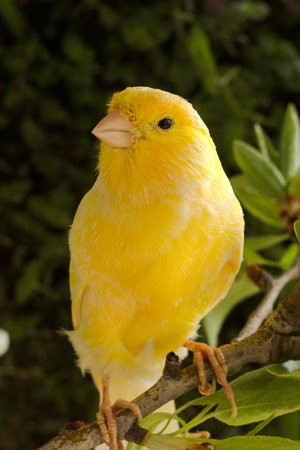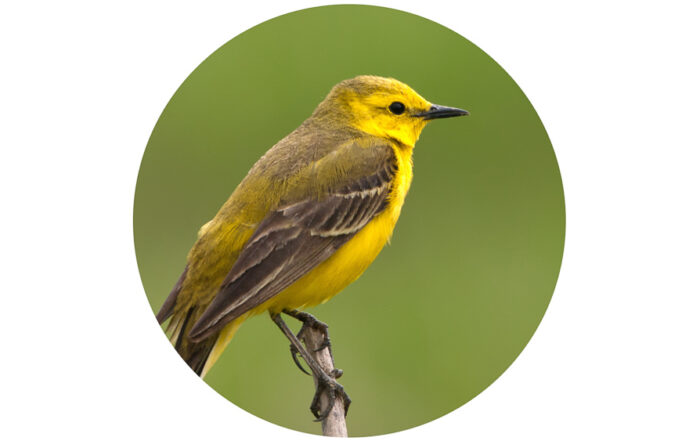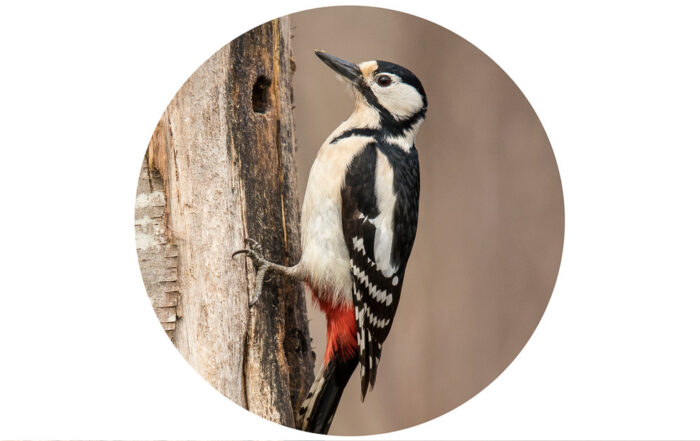The Ultimate Guide to Feeding Wild Birds

Feeding the birds in your garden is one of the best ways of helping wildlife flourish. Not only does it support adult birds through times when nature doesn’t provide enough to go around, it can also increase the survival rate of chicks, helping to ensure different species thrive.
But what many people don’t know is that the activity can be as good for you as it is the birds. Time spent watching the birds in your garden can help enhance mental wellbeing in our busy day-to-day lives as the sheer joy of watching these colourful visitors is enough to give most people a spring in their step for the rest of the day!
So, how do you attract wild birds in the first place? Is it just a case of putting out a feeder or two, filling it full of nuts and seeds and watching them come a-flocking? Or is there more to it than that?
Of course, feeding something is generally better than nothing, but to get the best out of the experience, and, more importantly, ensure the birds do, a little bit of knowledge will serve you well.
That’s why we’ve put together this ultimate guide to feeding wild birds, to help you turn your garden, patio, or whatever space you have available, into a haven for avian visitors. One thing they all have in common, however, is that they are wild birds, adept at finding food in their own environment. This begs the question why feed them at all? Does putting out wild bird seed really bring benefits to your garden visitors.
Why Feed Garden Birds?
However cute they might be, garden birds are wild and therefore much of their food comes from wild sources. Most eat a varied diet consisting of insects, worms, slugs, snails, spiders, and other bugs, as well as berries and fruit, seeds, nuts, and buds. Some garden birds have specific adaptations that enable them to eat specialist food, such as the Goldfinch which has a long bill for extracting seeds from thistles and teasels that other birds cannot reach.
However, the availability of food throughout the year is dictated by the seasons and the weather, and that means birds often follow a cycle of feast and famine. In times of famine, many birds can succumb to starvation, or else the lack of sustenance leaves them unable to fight off illnesses.
The good news is this is where you can help. By feeding garden birds you can help increase survival rates, which is essential for some species that are in threat of extinction.
But don’t just take our word for it. A study by the British Trust for Ornithology carried out in 2019 demonstrated that garden feeding has supported population growth in a number of different species. The study looked at the diversity of birds that were seen in British gardens in the 1970s and compared it to the present day. It found that in the 1970s, bird feeders were dominated by two species – House Sparrows and Starlings.
British gardens are now regularly visited by all of the birds listed in our Spotters’ Guide and many more. The study concluded much of that increase in diversity was due to people feeding wild birds. Supplementary feeding now supports nearly 200m individual birds in the UK.
So, we now know that feeding birds really does make a difference – a big difference. But what should you feed and when?
How Best to Feed the Birds in your Garden?
To have the most beneficial impact on the birds in your local environment, and to attract them to your garden, it is important to feed them all year round. Of course, any supplementary feeding you can do will be of value, but to have a lasting impact, year-round feeding is best.
Of course, the birds’ nutritional requirements change from season to season, but we can roughly divide the year into autumn/winter and spring/summer. For a more detailed look into the seasons, see our blog post, A Year in the Life of a Songbird.
Then there are also some specific events in the birds’ lives that need to be taken into consideration when deciding what to feed.
Autumn/Winter
For birds, autumn kicks off with the autumn moult, a time when they shed their feathers and grow new ones. Feathers wear out during the busy year and need replacing.
The process can take up to five weeks and growing new feathers drains energy. Autumn is also the time when temperatures traditionally start to fall, so building up some fat reserves is important, to see the bird through the long dark nights of winter.
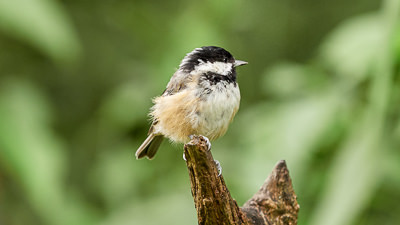
At this time of year, it is best to feed a high energy wild bird seed blend such as our High Energy No Mess. This is a nutritionally balanced, high energy, high protein blend that will ensure the birds have all the nutrients they need to get through the most testing times of the year.
Individual seeds and feeds can also be fed during the wintertime to increase protein and fat levels, such as Sunflower Hearts, Peanuts, Niger Seed, Suet Pellets and even Dried Mealworms which are a great source of protein when insect populations have all but completely dropped off.
Our Selected Fat Balls, Superior Fat Balls and Suet Dumplings make great additions for your garden in wintertime too, and the birds will thank you for them with high energy levels and survival rates.
During the winter, it is important to provide plenty of fresh water, too. This is because in the depth of the season, water in the natural environment can often freeze, leaving birds with nothing to drink.
Spring/Summer
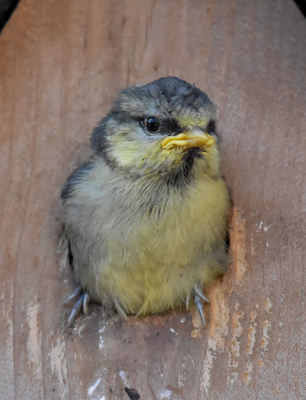 People often think that once winter has done its worst, and the warmer weather is on the way, feeding the birds in your garden can cease. But surprisingly, this is often the time the birds need you the most. This is because of the Food Gap.
People often think that once winter has done its worst, and the warmer weather is on the way, feeding the birds in your garden can cease. But surprisingly, this is often the time the birds need you the most. This is because of the Food Gap.
The Food Gap usually begins around March when all the fruit, berries and nuts from last year’s crop have been eaten, the worms are deep underground and insect activity is minimal, leaving wild and garden birds with very little to eat.
The Food Gap also comes at a time when many birds are beginning the nesting process, expending lots of energy to find building materials and construct their nests, and having and rearing young. Therefore, during the months when spring slides into summer, it is essential to keep feeders topped up with a variety of high energy and high protein feeds. While birds are rearing young, it is important not to feed whole peanuts, fat and bread as these can be harmful to nestlings, so stick to a specially formulated blend such as our Essential Blend for Spring and Summer, which is specifically created for this time of year. Dried Calciworms are also a fantastic supplement for this time of year due to the amount of calcium within them which is needed for egg production and bone strength.
How Much and How Often Should I Feed?
Once you start feeding wild birds, it is advisable to do it once a day, every day. By feeding every day, you will attract more of these beautiful birds to your garden, making it a wonderful haven for nature.
Birds will also begin to recognise where food is, and they will return to your garden with the expectation that it will be available. If it suddenly isn’t, they will have to find an alternative food source which puts them into competition with other birds.
The amount you feed will be dictated by the number of birds in your garden and how much they eat. If bird seed is leftover at the end of the day, then you are putting too much out.
This is not ideal for a number of reasons. Firstly, it is wasteful, but secondly, over time, the feed can go rancid and cause bacteria to build up which is harmful to the birds. Also, excess food can attract pests such as rats to your garden.
So, keep a regular eye on the amount you are providing. If it is all snaffled quickly, considering increasing the amount you put out. If there is some left over, reduce it.
Types of Feeders
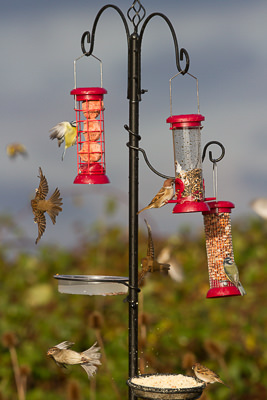
There are lots of different types of feeders on the market, so which should you buy? The hanging variety are of course what we traditionally think of when we think bird feeders, and these are fantastic for attracting a lot of garden birds.
However, not all species will come to them, particularly Blackbirds, Robins and Wrens. So, you’re faced with the decision of either scattering seed on your lawn and in your flower beds and hedgerows or investing in some ground feeders to ensure you attract these lovely little birds to your garden.
The type of feeders you choose will also depend on what you want to feed. If you’re feeding peanuts, for example, a mesh feeder will contain the nuts and enable birds to get them out with ease. A blend, by contrast, with different seeds in, will need the solid walls of a plastic tube feeder to ensure the feed doesn’t spill out. Both also allow the bird to see the food from distance. At Johnston & Jeff, we also provide speciality feeders for foods such as Sunflower Hearts, Niger Seed and Suet Pellets. In terms of numbers of feeders, that is really up to you, but it is always good to have a few feeders in different locations in your garden to attract a higher number of birds, and to reduce competition for the food. This will ensure all your garden visitors will be able to get their fair share of the spoils!
Hygiene
Finally, a word on hygiene. Feeders can attract a lot of birds and when in close proximity, there is a greater risk of infection and cross contamination. Therefore, it is essential to keep your feeders, bird tables and nest boxes if you have them, clean, to minimise the risk of conditions such as Salmonella, Trichomoniasis, Aspergillosis and Avian Pox.
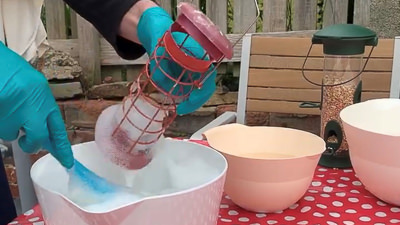
Feeders should be cleaned once a month or so with a specialist bird-friendly, non-toxic cleaning product, preferably one that is DEFRA-approved. You can find out more with our in-depth blog on the importance of keeping feeders and tables clean.
Bird tables should be cleaned regularly too, especially if you see droppings on them. Remove any excess food with a brush and dustpan and wipe down with non-toxic disinfectant. Finally, if you are concerned about any of the seeds sprouting in your lawn, try our No Mess, No Grow Wild Bird Food, which has been specifically formulated to ensure that doesn’t happen!
What are You Waiting for?
So, now you know the ins and outs of feeding wild birds, what are you waiting for? Head out and give those birds a treat. We’re willing to bet you get just as much out of it as they do, which is a win-win in our book!
To find out more about all of our wild bird foods, click here.
Our Recent Posts Giving Advice and Guidance on Wild Birds
Starlings and one of nature’s finest spectacles
Reading Time: 8 minutes Despite being one of the most well-known garden birds in the UK, the Starling is actually one of the species we need to be the most concerned about? They are considered to be one of the fastest declining birds in the UK and have been cropping up on the UK Red List of Conservation Concern for more than 20 years now. In this article we take a look at that mesmerising phenomena that is murmuration, as well as their wider behaviour.
A Guide to British Wagtails
Reading Time: 9 minutes Wagtails are delightful little birds and are so called because they do just that – wag their tails frantically as they go about their business. In Great Britain, we have three native species – the Pied Wagtail, the Grey Wagtail, and the Yellow Wagtail, which is a summer migrant. In this blog, we take a look at each of them, to find out more about these charming and animated characters.
Drum Roll for the Woodpecker, One of the UK’s Best Loved Birds
Reading Time: 10 minutes One of the most intriguing and evocative sounds in British woodlands is the Woodpecker tapping on tree trunks. But is the UK home to any other varieties of Woodpecker and if so, do they drum? In this blog, we take a closer look at one of Britain’s best loved and most iconic birds and unveil the secrets of their unique behaviour.






